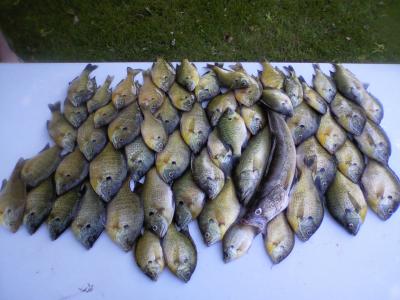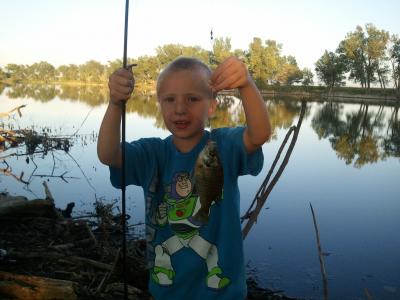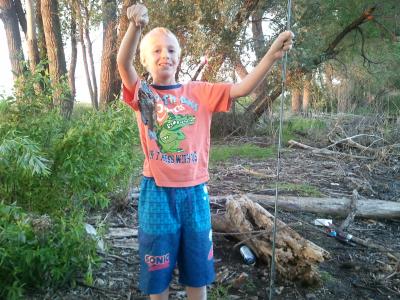Quote:
I don’t have an answer to your question, but instead, I’ll add my own.
There are so many lakes with a stunted bluegill (or other species) populations, it seems we should be prohibiting catch and release.
This pic is from a private lake in Illinois that does just that and the population is anything but stunted. This pic shows all the fish from one outing and the smallest is about 5 in, and there are only a few of those. The majority of the fish are in the 7-8 in range. The biggest at 10 in.
Am I missing something? This policy seems to work pretty well. Why not duplicate it?
This post deserves a whole separate response. . . .
This may be one of the futile quests of my career as a pointy-headed fisheries biologist, but I ain’t going to quit. There was a time when fisheries biologists told anglers that they needed to harvest a certain number of panfish, especially from small bodies of water, in order to keep those fish from “stunting”.
BALONEY!
Let me tell you why. . . .
Panfish species can reproduce at a very small size and a very young age (i.e. age-1). Panfish species like bluegills can reproduce at a size a lot smaller than anglers typically catch and for sure a lot smaller than anglers want to clean. Therefore, thinning or control of panfish numbers in order to prevent over-populating and reduced growth rates, in other words “stunting”, has to occur when the panfish are relatively small and young. And anglers ain’t going to accomplish that! The key to preventing the over-populating and stunting of panfish populations is a healthy population of predators! In most small bodies of water, the best predator for that job is a healthy population of largemouth bass. If you want excellent panfishing from a small body of water, the most important thing to do is release most, if not all of the largemouth bass that are caught from that body of water.
As a matter of fact, in my career I have seen way more panfish populations suffering from over-harvest by anglers than I have seen larger predator fish populations that were suffering from over-harvest. In many populations panfish never reach large sizes not because their growth rates are slow, but because they go home in the back of someone’s pickup before they have a chance to grow larger. When anglers tell me that a certain panfish population is “stunted”, the first thing I want to know is how they know that? Did they look at the age and growth of those fish? If so, then show me the data. NO, many “stunted” panfish populations do no have slow growth rates, instead they have a lack of older fish.
If angler harvest was necessary to produce big fish, why is it that un-fished, “virgin” fisheries have such great fishing for big fish?
Moreover, in many cases angling harvest actually encourages stunting of panfish populations. Anglers naturally select for the biggest fish in any population and that is especially true in panfish fisheries. Oftentimes the largest fish in a population are some of the fastest-growing fish. If anglers selectively harvest the largest, fastest-growing fish from a population, then the smaller, slowest-growing, more stunted fish are the ones that are left! This especially can have an impact on bluegill populations with their unique spawning biology (if you want to read even more about that, take a few minutes to read this, Sneakers and Guarders ).
I believe selective harvest is the way to go. Panfish are naturally more abundant and are the species that can withstand some harvest. Not only that, they are also some of the best fish on the table. But even with panfish fisheries anglers should be very much aware of the fact that large panfish are always less abundant, may be some of the fastest-growing and best genetic stock in that population, and therefore should be released! Harvest enough small and medium-size panfish for a meal of fresh fish, absolutely, but snap a couple of pictures and release the big ones!
Daryl Bauer
Fisheries Outreach Program Manager
Nebraska Game & Parks Commission
[email protected]
Bauer’s Barbs and Backlashes



 ).
).